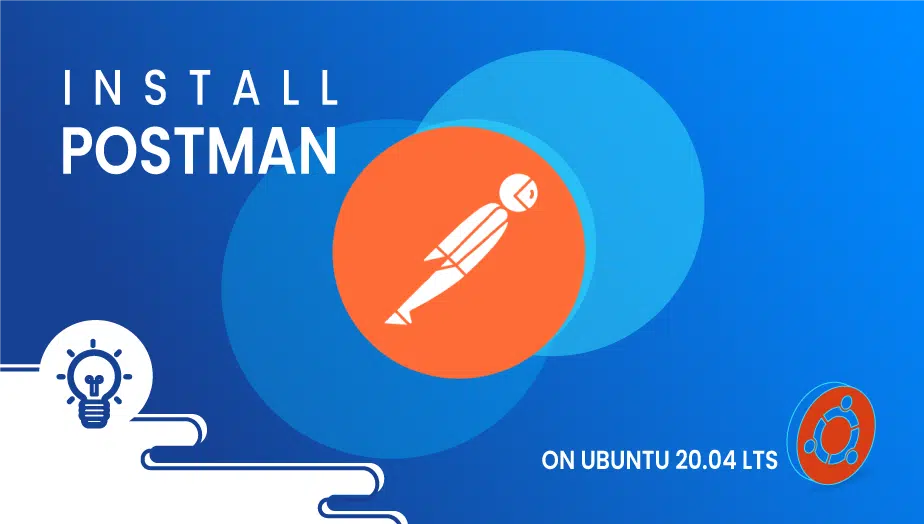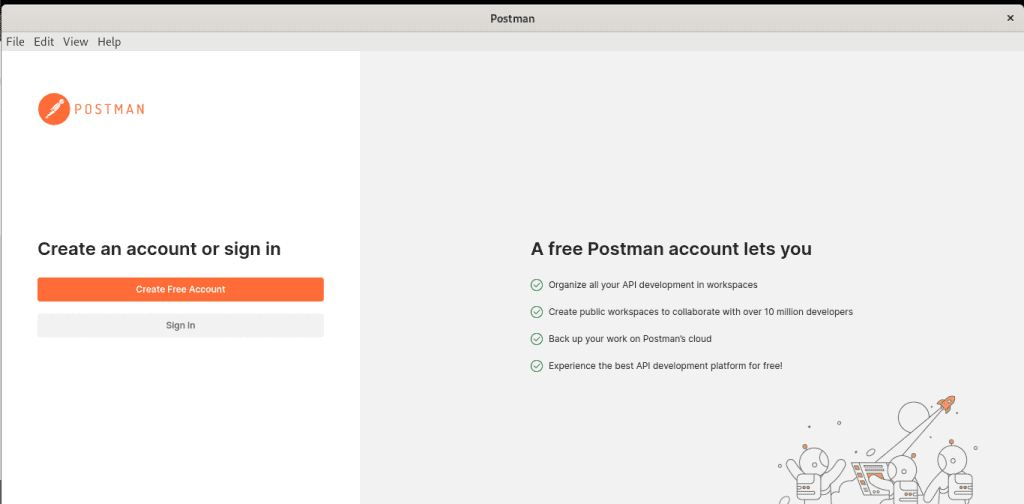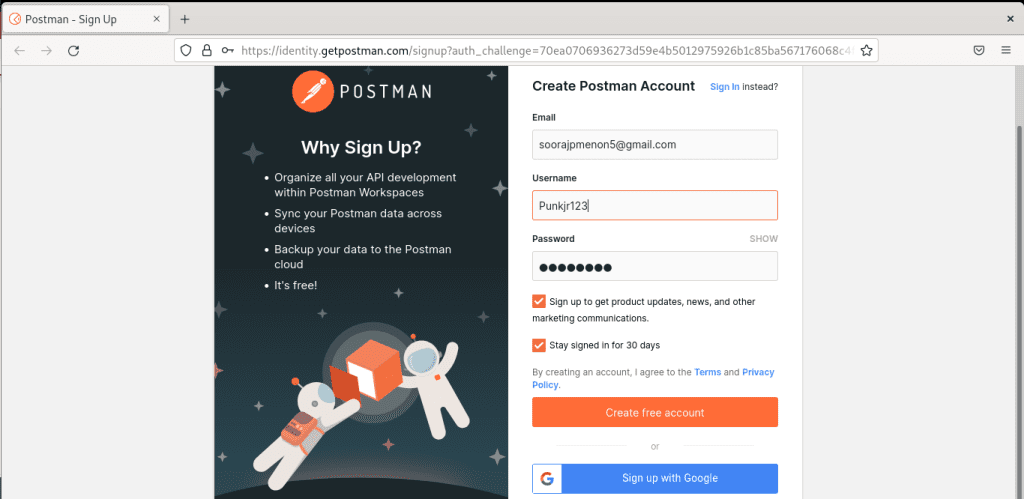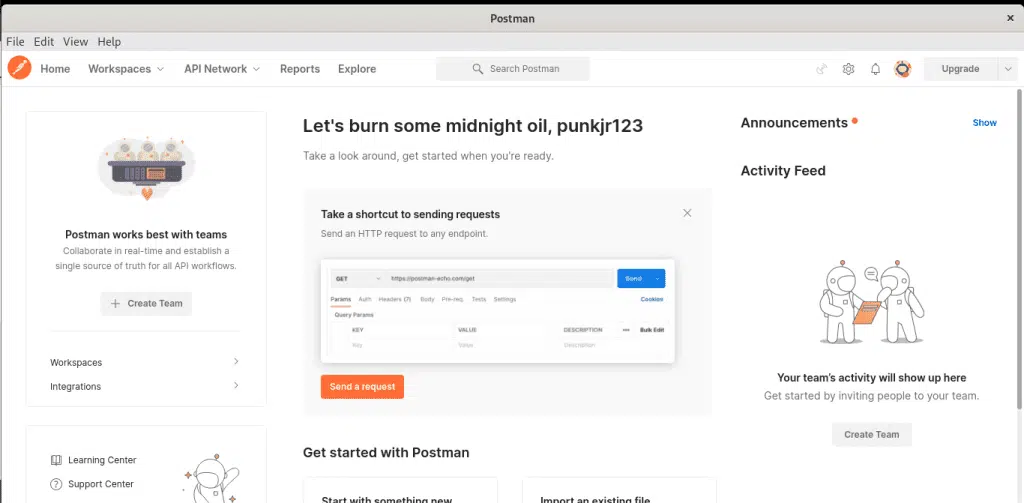Postman is a popular tool used for API development and testing. It offers an extensive suite of features that enable developers to streamline their workflow. In this article, we will ensure an in-depth look at Postman, Installation and its features when used on the Ubuntu operating system, and its advantages and disadvantages.
Postman on Ubuntu: Overview
Postman, a widespread Linux distribution, is available on multiple operating systems, including Ubuntu. Using Postman on Ubuntu offers several benefits, including:
- Ease of Use: Postman’s user-friendly interface makes it easy for developers to create and manage requests, even if they have little to no experience with APIs.
- Cross-Platform Compatibility: Postman is compatible with multiple operating systems, including Ubuntu, which allows developers to use it on the platform of their choice.
- Comprehensive Feature Set: Postman offers a wide range of features, including testing, debugging, and collaboration tools, that enable developers to flowline their workflow and work more efficiently.
- Large Community: Postman has a large community of users and developers, which means that there are many resources available for troubleshooting, learning, and collaboration.
In this article, we demonstrate steps mostly on GUI-enabled Ubuntu instances. For those of you who have not enabled GUI on your instance, the link below will link you to a guide that will show you how to install GUI on Ubuntu.
Now open your terminal and run the following commands to update your system.
# apt-get update && apt-get upgrade -y
Step 2: Install Postman
Postman snap package is available from Snapcraft. You can install Postman on Ubuntu 20.04 by simply executing the following command.
# sudo snap install postman
Postman can now be found in Activities on your desktop.
We will show you how to create a new account here.
Postman will now send you an email asking you to confirm that you are the owner of the email address. Once your account is confirmed, it will be activated and you can start using it.
Advantages of Using Postman on Ubuntu
- Simplified API Testing: Postman provides an intuitive interface that makes creating and managing API requests easy. The tool also offers various testing features, such as automated tests and custom assertions, making it easier to validate API responses.
- Collaboration: Postman provides various collaboration tools, such as shared workspaces and version control, which allow team members to work together on API development and testing projects.
- Versatile: Postman supports a range of APIs, including REST, SOAP, and GraphQL, making it an excellent choice for developers working with different APIs.
- Customization: Postman offers a range of customization options, such as themes, keyboard shortcuts, and the ability to create custom scripts. These features enable developers to tailor the tool to their specific needs.
Disadvantages of Using Postman on Ubuntu
- Cost: Postman offers a free version; more advanced features, such as API monitoring and documentation, are only available with a paid subscription.
- Limited Offline Functionality: Postman requires an internet connection to access some of its characteristics, such as syncing and collaboration tools. This can be a problem for developers working in poor connectivity areas.
- Limited Automation Capabilities: While Postman offers some automation features, such as automated tests, it does not provide advanced automation features, such as continuous integration (CI) and deployment (CD).
Using Postman on Ubuntu
To use Postman on Ubuntu, you must first download and install it. The easiest way to install Postman on Ubuntu is to use the snap package manager. To do this, you must install snapd on your system.
Postman offers a range of features that enable developers to streamline their workflow and work more efficiently. Here are some of the critical elements of Postman and how to use them on Ubuntu:
- Creating a New Request
To create a new request in Postman, you must first open a new request tab by clicking on the “New” button in the top-left corner of the Postman window. This will open a new request tab where you can specify the details of your request.
You first need to select the HTTP method (e.g., GET, POST, PUT, DELETE) you want to use for your request. You can then enter the URL for the API endpoint you want to access.
Once you have entered the URL, you can add any required headers, query parameters, or request body data. You can also save your request as a collection or add it to an existing group.
2. Testing Requests
Postman offers a range of testing features that enable developers to validate their API responses. To test a request in Postman, click on the “Send” button in the top-right stymie of the request tab. This will send the request to the API endpoint and display the response in the request tab.
Postman offers various testing features, such as automated tests and custom assertions, enabling you to validate your API responses automatically.
3. Debugging Requests
Postman offers a range of debugging features that enable developers to troubleshoot issues with their API requests. To debug a request in Postman, you can use the built-in console, which displays the request and response information, including headers, status codes, and response times.
4. Collaborating with Team Members
Postman offers a range of collaboration tools that enable team members to work together on API development and testing projects. To collaborate with team members in Postman, you can use the shared workspace feature, which allows team members to share collections, environments, and test suites.
Postman also offers version control features, which enable team members to track changes to collections and collaborate on them using Git or other version control systems.
Conclusion
Postman is an excellent tool for API development and testing. Using it on Ubuntu offers several benefits, including ease of use, cross-platform compatibility, a comprehensive feature set, and a large community of users and developers.
While Postman has some limitations, such as cost and limited offline functionality, its advantages outweigh its disadvantages, making it an excellent choice for developers working on API projects.
Suppose you are a developer working on Ubuntu. In that case, Postman is essential to help you streamline your workflow, collaborate with team members, and test and debug your API requests efficiently.
Thanks for reading! I hope it was informative for you!
Postman is a popular API development and testing tool that enables developers to create, test, and debug API requests. It offers a range of features, including request building, testing, debugging, collaboration, and automation.
Yes, Postman is available on Ubuntu, and you can download it from the official website or the Ubuntu Software Center.
Postman offers both free and paid versions on Ubuntu. The free version has limited features, while the paid version offers more advanced features and capabilities.
Some advantages of using Postman on Ubuntu include cross-platform compatibility, ease of use, a comprehensive feature set, a large community of users and developers, and collaboration tools.
Some disadvantages of using Postman on Ubuntu include cost (for the paid version), limited offline functionality, and some limitations in terms of automation and scripting.
To get started with Postman on Ubuntu, you can download it from the official website or the Ubuntu Software Center. You can then create a Postman account, which will enable you to save your collections and access them from other devices.




























